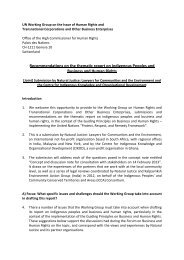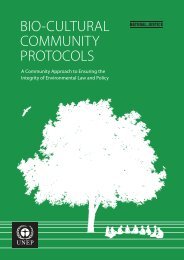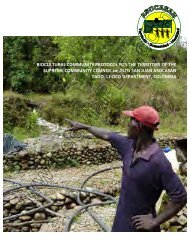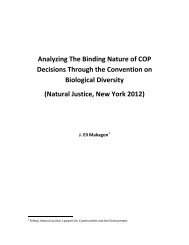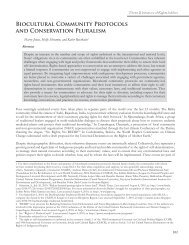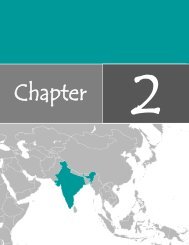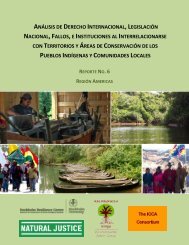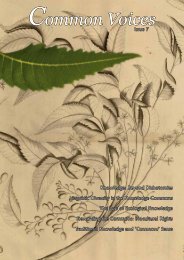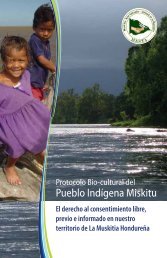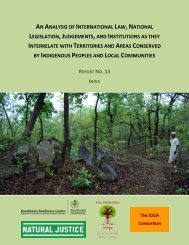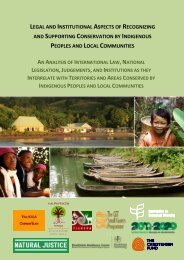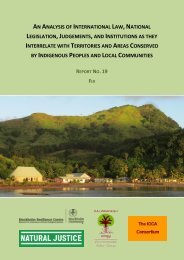Copy of bcp 18112011 English - Natural Justice
Copy of bcp 18112011 English - Natural Justice
Copy of bcp 18112011 English - Natural Justice
You also want an ePaper? Increase the reach of your titles
YUMPU automatically turns print PDFs into web optimized ePapers that Google loves.
The biocultural community protocol <strong>of</strong> maldharis <strong>of</strong> banni6. OUR KANKREJ CATTLE12Earlier we used to raise Kankrej cattle,commonly called Vadhiyari. During earlytimes, through barter system, we used to getgrains from farmers by giving them cow milkand ghee. This cattle breed is also famous forits draught capacity, amongst the farmers <strong>of</strong>Kutch and Saurashtra, having savai chal,(meaning back leg reaches further thanwhere front leg was landed) which gives anopportunity to cover more distance in lesstime. Till today, we Maldharis <strong>of</strong> Banni, everyyear, sell 8-10 thousands Kankrej bullock inKutch and Saurashtra.This dual purpose animal is adapted to theharsh climatic conditions <strong>of</strong> Kutch and hashigh milk yield capacity with good fatcontent. This cattle is strongly built andfamous for its beautiful look with large halfmoon shaped horns. Average milk yield <strong>of</strong>pure Kankrej cattle is 6-8 lts a day whilelactation yield is around 1800-2000 lts. Thisanimal has the capacity to move longdistance, therefore, able to migrate todifferent parts <strong>of</strong> Gujarat during droughtyears.In last few decades, due to man made andecological hazards, the number <strong>of</strong> Kankrejcattle in Banni has been reduced drasticallyfrom 50000 in late sixties to hardly 15000-17000 at present. Still some Maldharis <strong>of</strong>Banni conserve and survive this animal breedby fighting against all odds.



